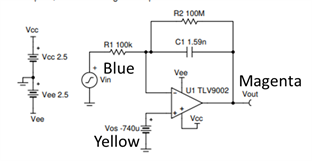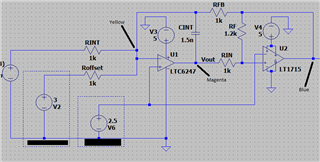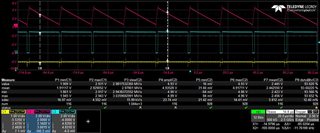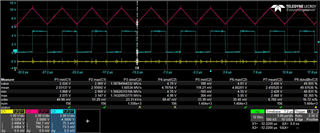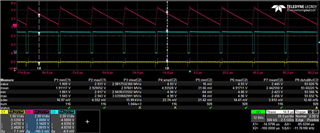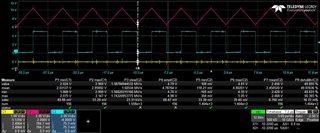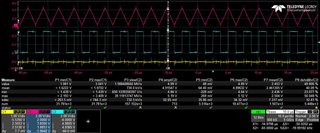Other Parts Discussed in Thread: TLV9062, MCP6292, TSV912, TLV9152, OPA2323
When testing this series of op-amp in an integrator circuit we discovered some significant coupling between the input and the output feedback. This phenomenon was not experienced with other op amps of a different series (Notably the MCP6292IDDFR and TSV912AIDDFR). It was also seen when using the TLV9152IDDFR and TLV9062IDDFR op amps within the same circuit. The attached plots detail the problem further: 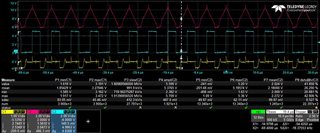
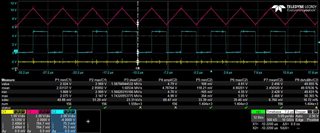
The inverting input is the yellow trace, output from the op-amp is in magenta, and the feedback is in blue.
Any help in explaining or understanding why this event is happening and why it only occurs on some of these parts would be appreciated.


